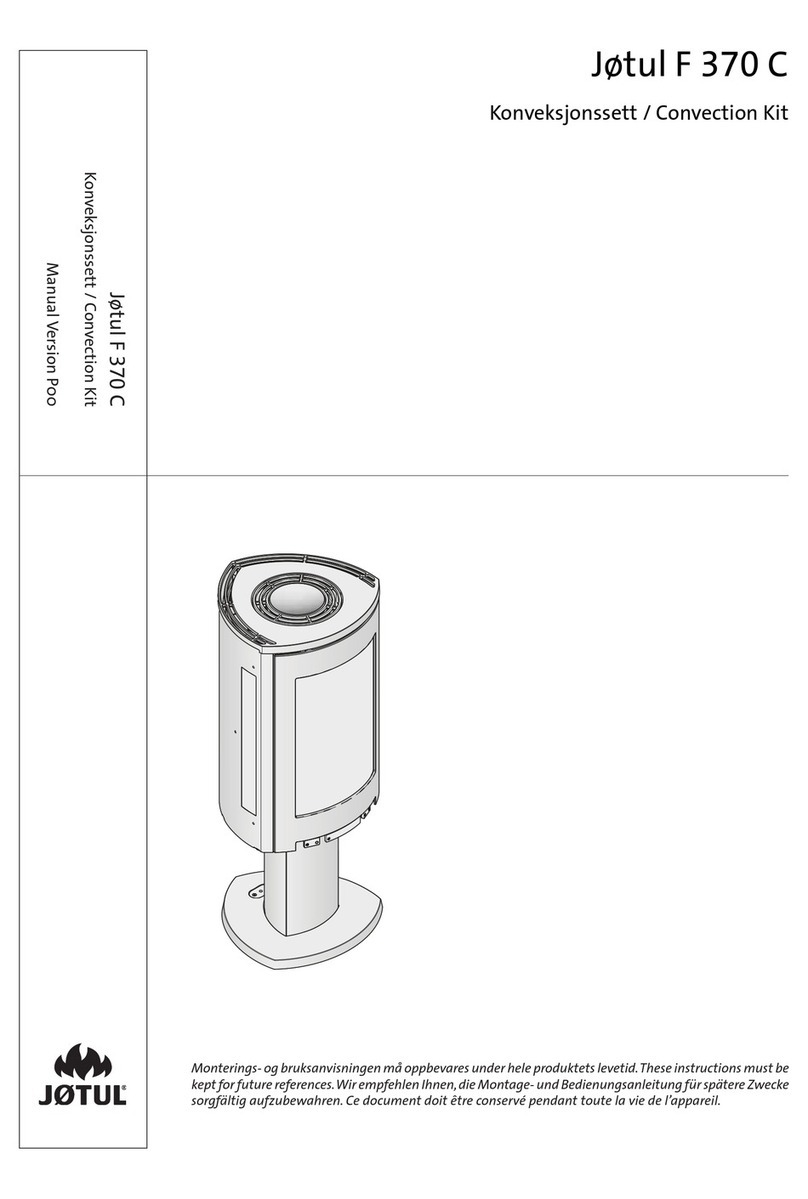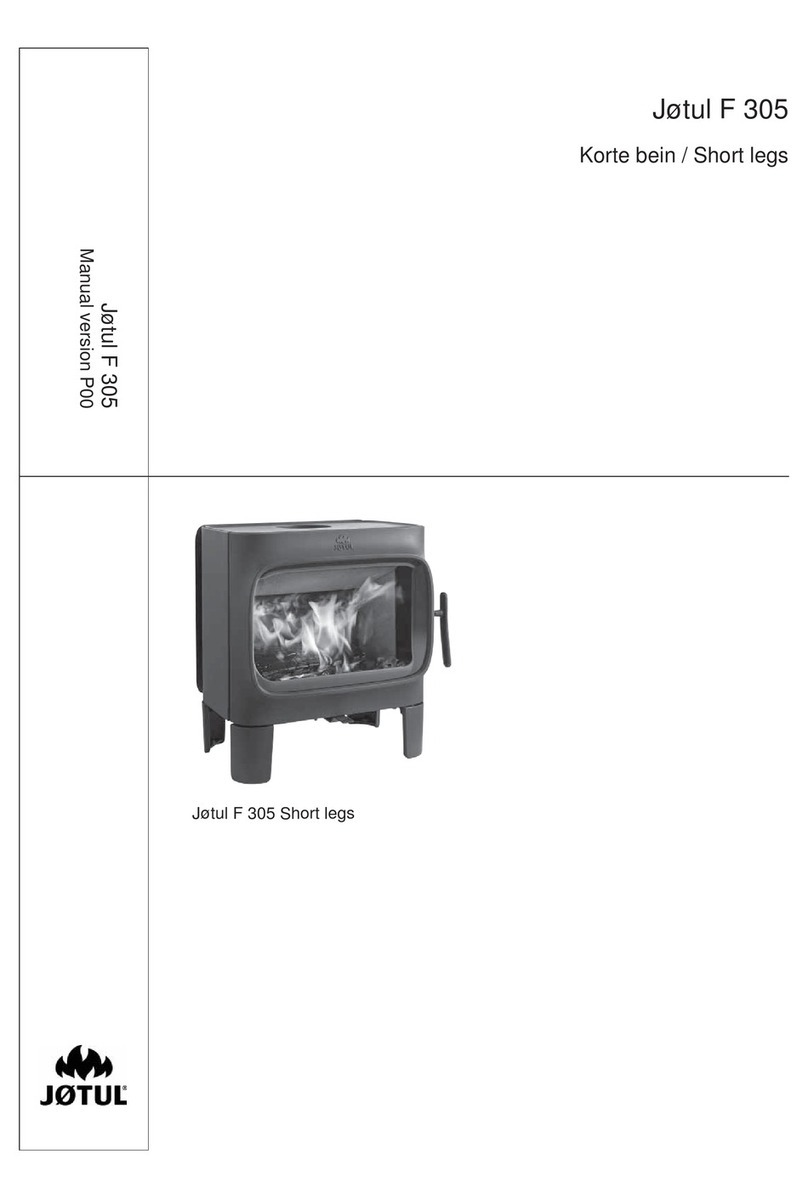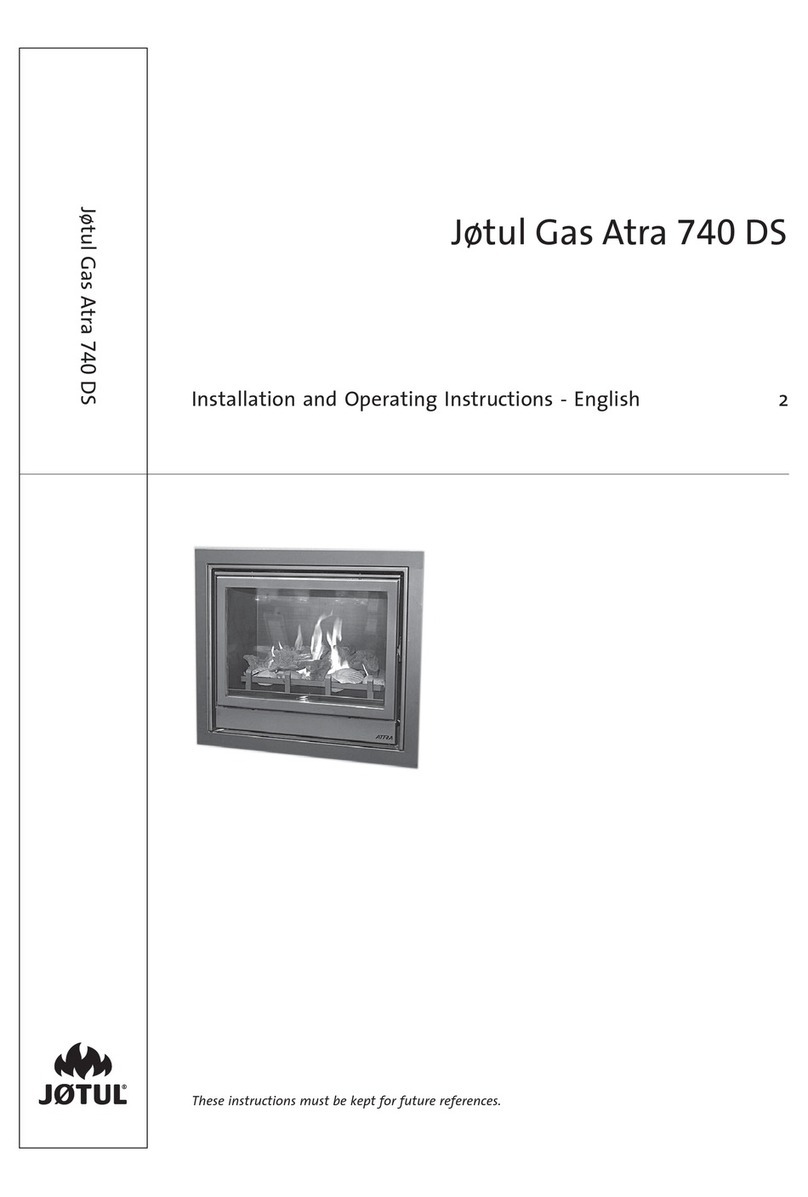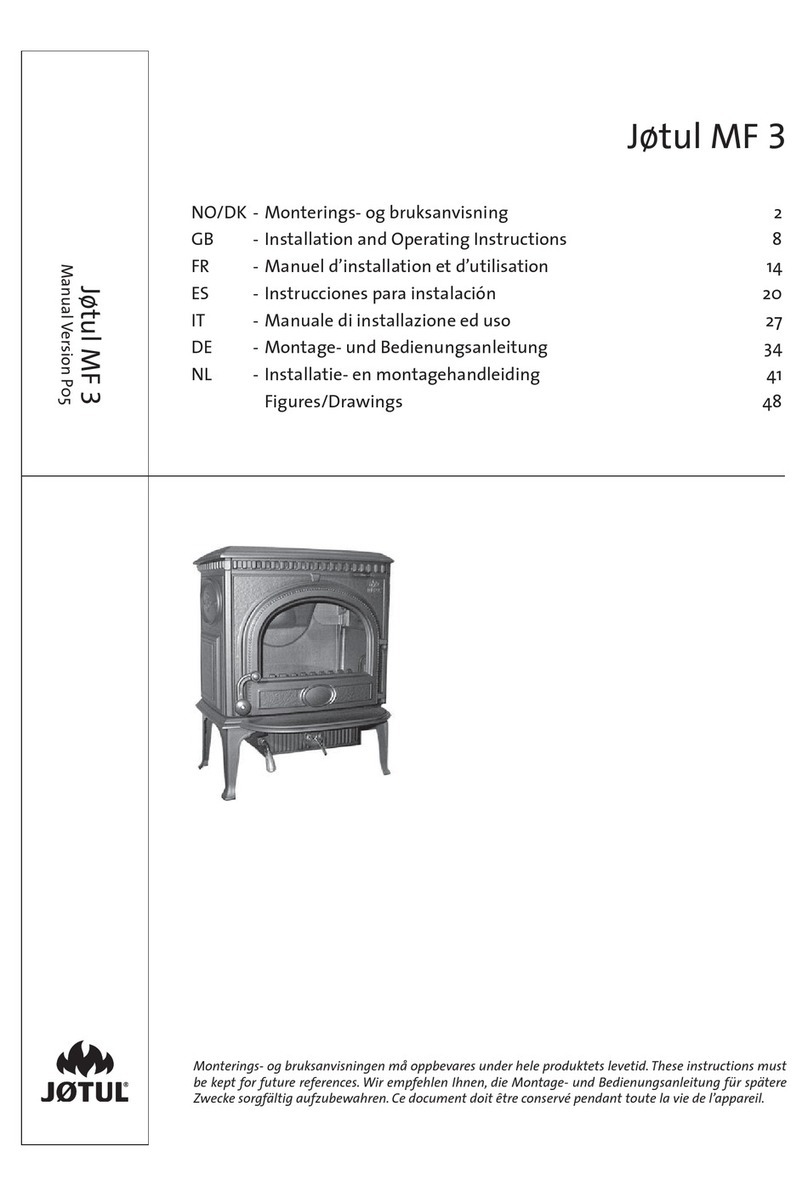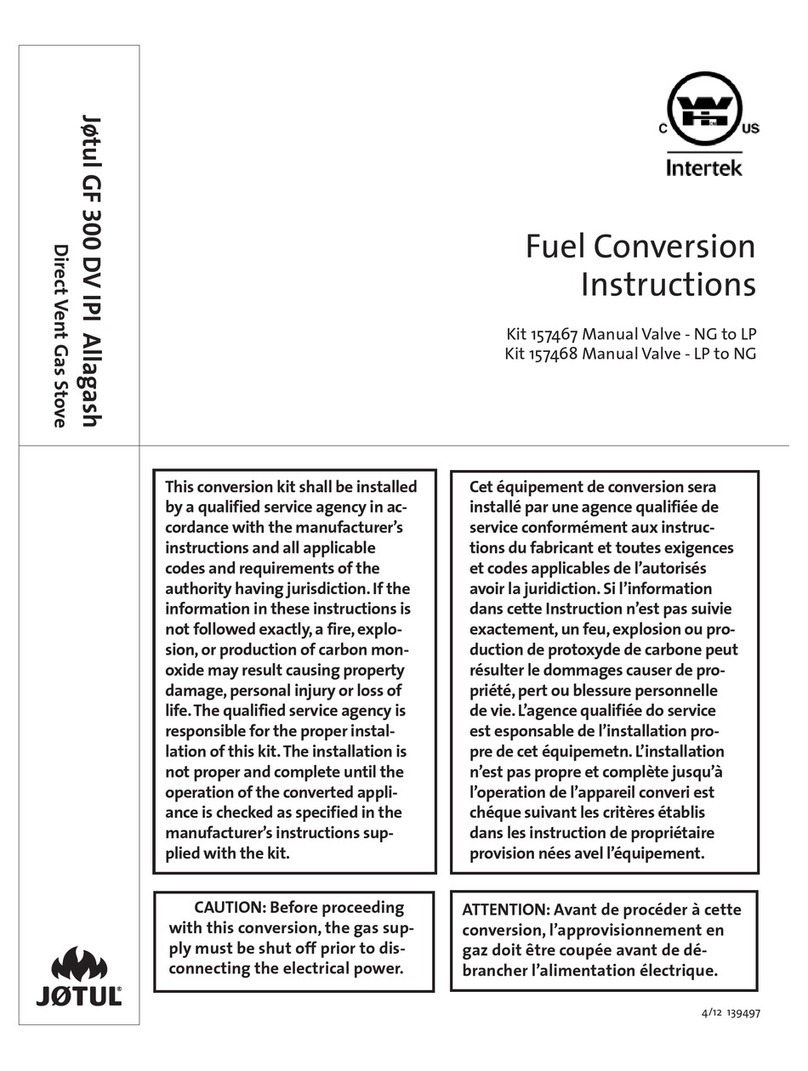
3.4 N4ake a f loor protector.
The heater shall be placed on a non.combustible f locr
protector of 3/B inch minimum thick of asbestr)s mill-
board or equivalent.
The f loor protector shall ev.tend at least 16 inches in
front, and at ieast B inches to each side of and 14
inches in back of the heater. See f ig. 1.
lf the f loor projection of the chimney connector is
extending beyond the sides or back of the heater. lhe
f ioor protector should be expanded in that cjirection in
its f ull width to cov€r the f loor at leasl 2 in. beyond the
projected area.
The floor protector should cover the floor in this
direction just up the wall.
The f loor protector may be placed on the sub or f inish
f loorirrg, whether the f iooring is combr.rstible or not.
The iloor protector shail be reaCi!y distinguishable
f rom the surrounding f loor.
Assemble the heater (ltem nc ref ers to part list)-
The heater is delivered in.. .one package which
contain s:
1. Unit 507 B with loose top lid and loose lurnable
grate.
2. Ash drarver (ln space behind ash door). ltem no.21.
3. Combined crank/loose handle for operation of
turnable grate, door rnechanisms and ash drawer.
Item no.43.
4. lncreaser 126-151 mm f or 6" f lue pipe adaption.
Item no. 44.
5. Plastic bag with piastic Knob for the lower door
handle and wooden knob for crank, r/ith screws.
6. These instructions. Cat. no. 125408.
7. Cast iron plaque.
Note: The unit contains loose parls lvhich may fall
out and damage other parts if the unit is
tilted. Please remove the top lid and the turn-
dulY 9ldlg.
Place the unit on the f loor pi'otector according to the
clearances given in f ig. 1. Be certain that the turnable
grate is postioned so that the gear faces down and
that the top lid is properly replaced when the unit is in
position. The crank (3) can be perrnanently stored on
the turnable grate shaft which protrudes centrally
between the two lower doors at the front of the
heater. The ash drawer is placed in the space behjnd
the ash door.
lnstall the chimney connector.
\ Jith the heater in place. you can nc!! determine the
path of the chimney ccnnector. The connector shall
be used to connect the heaier lo the chimney. The
connector shall be made of noncombustible
corrosion resistant material such as steel or refrac.
tory masonry. lf a steel connector is to bi used. it
should be 24 gauge or thicker. black or blued steel
pipe. A connector shall be as short and straight as
poss ibie.
A 6" chimney connector should be used. The healer is
ceirvered with a 5 -6 adapier which is to be
attached to the smoke outiet.
The adapter is secured to the smoke outlet by t\ro
6 rnm screws urhich are delivered with the heater.
A connetor'to a rnasonry chimne,r, shail extenC
tnrough the rnrall to the inner lace or liner, but not
beyond. and shall be f rrmly cemented to masonrv. A
thimble must be used to iacilitate removal of the
clrimney connecior for cleaning. in which case the
thimble shall be perma.nently cemenled in place t.,ith
the crimped end towards the heater to allovr any
condensate to drain into the heater. Secure each joint
with 3 sheet metal screws.
A chimney connector shall not pass throuqh any floor
or ceiling, nor through a {ire wall or lire partition.
lnstall the factory built chimney in accordance with
the chimney manufacture!''s instructtons.
3.7. Before building a lire.
With the chimney connector properly secured lo the
smoke oullet, your Jstul coai slove no 507 B is ready
tor use. Please read lhe tollowing section carefully
upon using the heater.
4. OPERATION OF THE ROOM HEATER
NOTE: Don't ever let the unil burn with open doors or open
lhe venls loo rnuch as the combusiion then might
be loo intence and lhe unit might be damaged. Ena.
melled heaters must not be fired to !he extenl lhat
they assume a red glow. The enamel may lhen be
damaged.
4.1. This unit can burn various qualities of coal, such as
bituminous or anthracite. lt can aiso burn wood.
Please tle certain that the wood has been seasoned
f or at least 4-6 months bef ore being burned.
4.2. When used with bituminous coals:
A. Kindle the unit with paper and some smali size
wood with the bottom vent settinq at f ull open,
and then after the vrood has been ignited, add a
. layer ol coal. U/hen the coals have caught fire, add
more coal until the unit is f illed. When you are
certain that the unit is burning, turn the bottom
vent down to 2/3 turns to '1 1/3 turns depending on
draf t, and let the unit burn for at least t hour be-
fore adjust jng the settrng to the posiijon which
salisly your heai requirements. During this perioc!,
you shoulC continua;ly observe the unit and bil
certain that is Coes not assume a recj glow. The
erramel wili be damaged if operating under such
cond it ions.
8. Bituminous coal vJill require primary air frcm the
Veot in the aslr door as well as secondary air f rom
the vent in the feed door at the top of the unit.
Adjust the secondary air vent to reach a complete
combustion of ihe gases.
4.3. When used with anthracite:
A. Kindle with paper and some small size wcod and
then af ter the vi ood has been ignited aCd a small
layer of f uel. Add more af ter the f uel bed is ignited.
8 Anthracite requrres a good draft through the vent
in the bottom ash door- ln aCCition to this. secon-
dary air has to be added ihrough the venI in the top
cjoor to reach a conrpiete combustion of the
Qases. The vents are adjusted until you gel the
heat you need and wrth a clean combustion.
C. When using the 507 ts with anthracite coal, lhe use
of a barometric damper is permitted. Barometric
dampers used in conjunction with coal burning
units shall comply r/ith the requirements f or draf t
equipment. Standard UL 328.
4 4. V'rhen used wtth wood
A. Kindie \.vitn paper and some small size wood and
add the amount of wood you need.
B. The draf t is reguiated by the vent in the lo\4er door.
The vent in lhe top feeC door must always be
cpeneo slightly f cr aCCiticn of second3i-y ;rir.
.F
J.Ct


